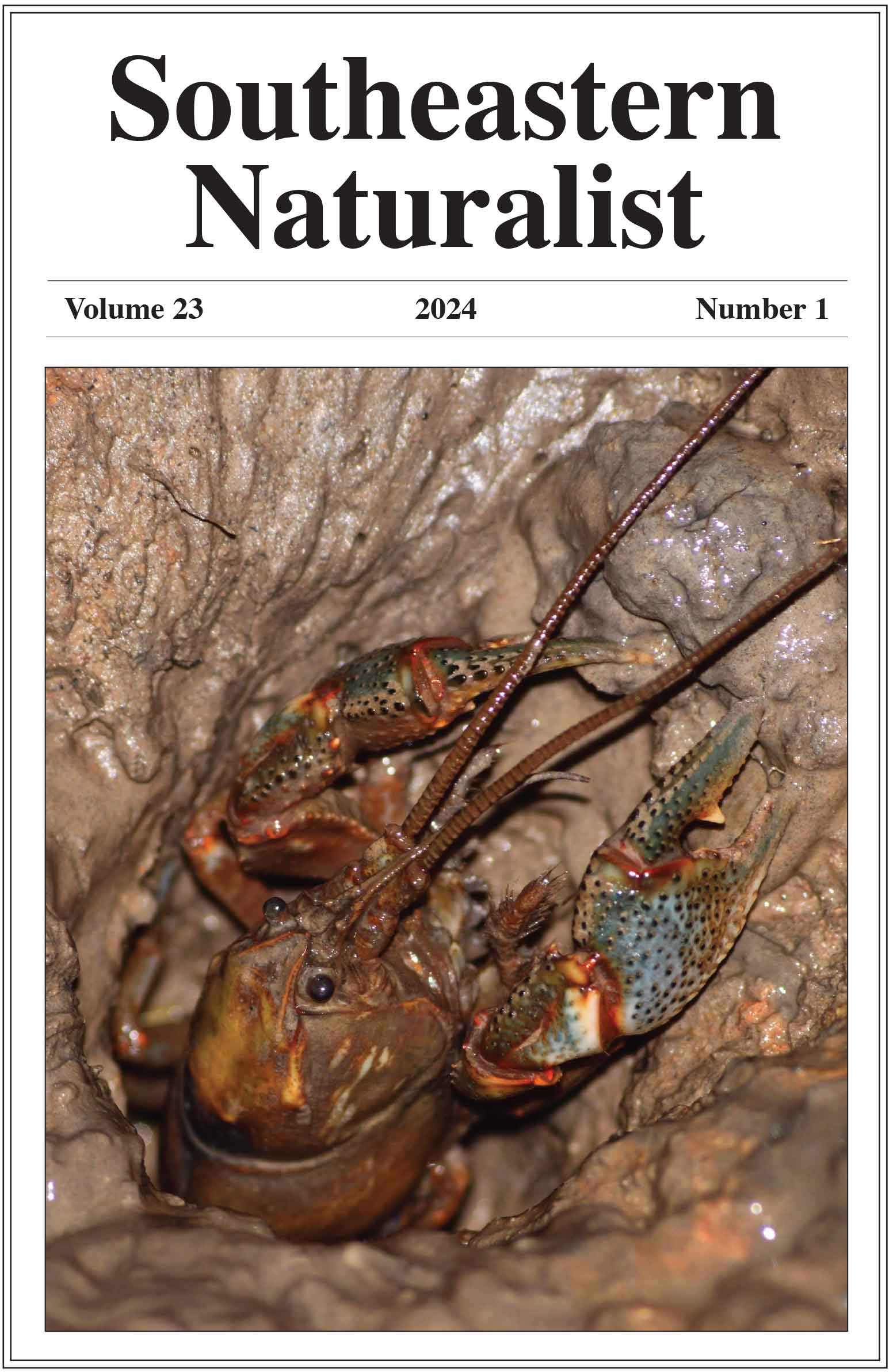Increasing Detections of Small to Medium-sized Mammals Using Multiple Game Cameras
D. Blake Sasse1,*, Jaclyn S. Reifeiss2, and Roger W. Perry3
1Arkansas Game and Fish Commission, 213A Highway 89 South, Mayflower, AR 72106. 2Hendrix College, 1600 Washington Avenue, Conway, AR 72032. 3Southern Research Station, US Forest Service, PO Box 1270, Hot Springs, AR 71902. *Corresponding author.
Southeastern Naturalist, Volume 22, Issue 1 (2023): 36–42
Abstract
Surveys using game cameras have become a standard method to determine presence of small to medium-sized mammals such as Spilogale putorius (Eastern Spotted Skunk). Surveys typically use a single camera at each site; however, prior work with other species suggests that single cameras are less likely than multiple cameras to detect small and mid-size mammals. During the winters of 2019−2020 and 2020−2021, we placed 71 camera stations in the Arkansas Ozarks, with each station having 2 cameras aimed at the same target. We used detections of a common species, Sciurus carolinensis (Eastern Gray Squirrel), to determine if adding an additional camera at each site could increase detections of animals similar in size. Overall, detections increased 27% with the addition of a second camera. We found that a second camera increased Eastern Gray Squirrel detections by 15.6% when the animal was closer than 1 body-length from the target bait tree and 41.2% when the animal was more than 1 body-length from the bait tree. We conclude that a single camera may miss a significant number of detections of small to medium-sized animals and could bias results of detection/non-detection studies.
![]() Download Full-text pdf (Accessible only to subscribers. To subscribe click here.)
Download Full-text pdf (Accessible only to subscribers. To subscribe click here.)
Access Journal Content
Open access browsing of table of contents and abstract pages. Full text pdfs available for download for subscribers.
Issue-in-Progress: Vol. 23 (2) ... early view
Check out SENA's latest Special Issue:












 The Southeastern Naturalist is a peer-reviewed journal that covers all aspects of natural history within the southeastern United States. We welcome research articles, summary review papers, and observational notes.
The Southeastern Naturalist is a peer-reviewed journal that covers all aspects of natural history within the southeastern United States. We welcome research articles, summary review papers, and observational notes.